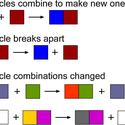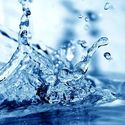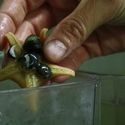Oceans are becoming more acidic due to increased levels of carbon dioxide1 (CO2) in the atmosphere2. Tiny marine animals called bryozoans may help monitor the impact of ocean acidification3 on the marine ecosystem4.
Ocean acidification has the potential to affect many marine organisms that make shells and skeletons out of calcium carbonate. Associate Professor Abby Smith and the Carbonate Geochemistry5 and Sedimentology6 research group at the University of Otago are investigating bryozoans as a way to monitor the impacts of ocean acidification. Bryozoans may be the ‘canary in the coalmine’ for our oceans.
Understanding ocean acidification
The world’s oceans currently absorb as much as one-third of all CO2 emissions in our atmosphere. This causes the pH7 to decrease, resulting in the ocean becoming more acidic. Scientists have long understood that an increase in carbon8 dioxide in the atmosphere will result in higher levels of dissolved CO2 in seawater. However, a relatively recent discovery is that even small changes in water pH can have big impacts on marine biology9. Ocean acidification is a worldwide issue. However, as CO2 is more soluble in colder water, it is of particular concern in New Zealand’s temperate oceans.
The effect of ocean acidification on marine ecosystems
Many marine species10 rely on calcium carbonate to build a shell or skeleton. One of the effects of ocean acidification is a reduction in the availability of carbonate. This means that any animal that produces a calcium carbonate skeleton will find it much more difficult to do so as CO2 levels in the atmosphere rise and oceans become more acidic. Organisms could grow more slowly, their shells could become thinner or they might dispense with shells altogether.
Many of these organisms, such as bryozoans, may no longer be able to form thickets that currently provide an important shelter and nursery area for other marine animals such as sea stars and many fish species. It is difficult to predict the overall impact on the marine ecosystem, but many scientists fear that ocean acidification has the potential to decrease marine biodiversity11 on a very large scale. Climate change12, overfishing and pollution also threaten the health of our marine ecosystems13, and ocean acidification is likely to increase vulnerability to these pressures.
Nature of science
Scientists can play an important role in informing policy decisions. Abby’s role has been working with other scientists to better understand the potential impacts of ocean acidification. This research will help policy-makers make decisions about the issue.
Bryozoans can help monitor ocean acidification
Abby Smith is a biogeochemist14 who leads the Carbonate Geochemistry and Sedimentology group at the University of Otago. Abby and her students investigate carbonate sediments15 in temperate waters and geochemical signals in shells and skeletons. A major focus of their work is New Zealand’s bryozoans – their identification, classification16, growth and production, ecology17 and geochemistry. With growing concern over ocean acidification, the work with bryozoans is becoming more important. This is because bryozoans have the potential to act as environmental indicators and provide information about the effects of ocean acidification.
Part of Abby’s research involves working on different bryozoan18 species and investigating how they respond when they are placed in solutions with different pH levels. The results have shown that a decrease in pH affects the skeletons of bryozoan species differently, depending on what they are made of and the shapes formed by their colonies. These results mean that some species of bryozoans have the potential to act as ‘a canary in the coal mine’ and provide early warning signs for areas that are at greatest risk from ocean acidification.
Ocean acidification has caused Abby to change some of her views and approaches to scientific research. Over the past couple of years, she has started to collaborate more with researchers in other fields and work harder on the practical applications of her science research, rather than just focusing on the intellectual challenge. As part of her role as a scientist, Abby is now becoming involved in things like policy, government response and advocacy.
Activity idea
In this activity, students observe how chicken eggs can be used to simulate19 the potential effects of increasing ocean acidity on marine animals with calcium carbonate shells or skeletons, for example, bryozoans and cockles.
Useful links
Read this New Zealand Geographic article by Veronica Meduna to learn more about research into the effects of ocean chemistry change on marine organisms, particularly those that use calcium carbonate as a building block – Acid Seas.
The New Zealand Ocean Acidification Observing Network (NZOA-ON) is a nationwide network of stations to monitor coastal pH.
Find out more about NIWA's work investigating ocean acidification.
See the StatsNZ website for information, resources and data20 on ocean acidification.
- carbon dioxide: CO2 is a colourless, odourless, incombustible gas. It is a product of cellular respiration and combustion and is an essential component in photosynthesis.
- atmosphere: 1. The layer of gas around the Earth. 2. (atm) A non-SI unit of pressure equivalent to 101.325 kPa.
- ocean acidification: Decrease in ocean pH due to higher levels of dissolved carbon dioxide.
- ecosystem: An interacting system including the biological, physical, and chemical relationships between a community of organisms and the environment they live in.
- geochemistry: Study of the chemical composition of the Earth’s crust and the reactions of chemical elements in its minerals, rocks, soil, waters and atmosphere.
- sedimentology: The study of the Earth with a special interest in rocks that have formed from compacting sediments and of the processes by which they were formed.
- pH: A measure of the acidity or alkalinity of a substance, based on a scale of 0 to 14. Acidic solutions have pH values less than 7, whereas alkaline solutions have pH values greater than 7.
- carbon: A non-metal element (C). It is a key component of living things.
- biology: The science of living things.
- species: (Abbreviation sp. or spp.) A division used in the Linnean system of classification or taxonomy. A group of living organisms that can interbreed to produce viable offspring.
- biodiversity: The range of species found in a particular region. The more species that exist (the higher the biodiversity), the more likely it is that an ecosystem will survive episodes of change.
- climate change: The large-scale, long-term increase in the Earth’s average temperatures, with associated changes in weather patterns. There is significant scientific evidence that warming is due to increased quantities of greenhouse gases in the atmosphere, with most of the rise due to human activity.
- ecosystem: An interacting system including the biological, physical, and chemical relationships between a community of organisms and the environment they live in.
- biogeochemist: A scientist who studies the interactions of chemical, geological and biological processes in the natural environment.
- sediments: Material that settles to the bottom of a liquid. In geology, it describes the solid fragments of inorganic or organic material that come from the weathering of rock and are carried and deposited by wind, water or ice.
- classification: To arrange or organise by a set of chosen characteristics. In biology, the process of ordering living things into a system that allows scientists to identify them. Modern science uses the Linnaean system of classification where organisms are grouped based on what species they are most closely related to. In soil science, the grouping of soils with a similar range of chemical, physical and biological properties into units that can be geo-referenced and mapped.
- ecology: The study of the interactions of living organisms with each other and their environment.
- bryozoan: A type of largely marine water-dwelling invertebrate organism with a hard calcium carbonate outer casing. They band together to form colonies with an enormous range of shapes and sizes.
- simulate: To create a likeness or a model of a system or situation.
- data: The unprocessed information we analyse to gain knowledge.









